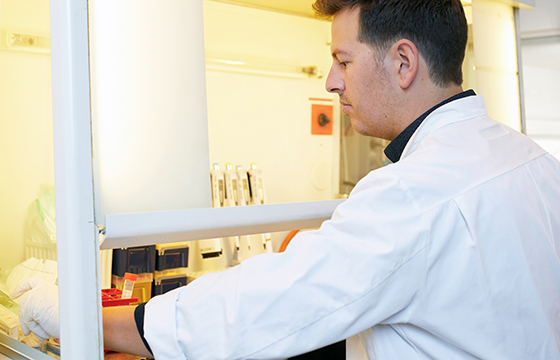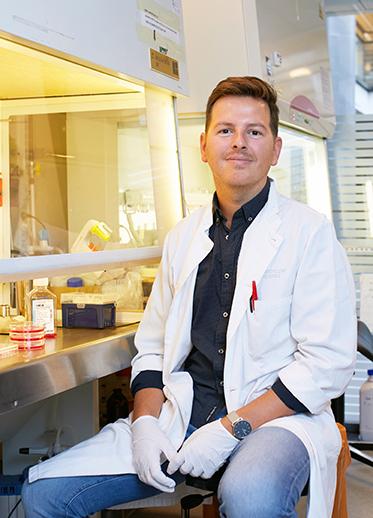Is gene editing the answer to treating osteoarthritis in the future?
Postdoctoral researcher Gonçalo Barreto has studied osteoarthritis for years. He is now trying to find out if and how gene editing could be applied to treat the common joint disease.


Text and photo: Laura Iisalo
Osteoarthritis is the most common type of arthritis, a joint disease that affects up to 20 per cent of the population at some stage in their life. It has a lot of health-associated problems, and can often lead to early retirement.
The current treatments include non-steroidal anti-inflammatory drugs, repairing the damaged cartilage area with biomaterial refill, or replacing the affected joint with a prosthetic implant. All options are suboptimal and come with side effects such as risk of infection and even increased mortality, while the costs to the public health system are significant.
– The common perspective has been that osteoarthritis affects old and obese people, and is caused by wear and tear of the joints. We now know that it is caused by many factors yet the disease is not widely understood and that’s why treatment options are limited, says Gonçalo Barreto, a postdoctoral researcher at Helsinki Rheumatic Diseases and Inflammation Research Group at the University of Helsinki.
Originally from Porto in Portugal, Barreto got interested in the subject during his master studies in biomedical engineering, and deepened his understanding by obtaining a PhD at the University of Helsinki by looking into how osteoarthritis evolves from immunological perspective.
– We looked at the main factors that lead to inflammation in joints so that we could figure out specific biomarkers for the disease. That way it is easier to see what stage of disease the patient has, and how the disease is progressing, Barreto explains.
Osteoarthritis and cartilage damage go hand in hand
Taking his research further, Barreto is currently looking into gene editing in order to find out whether it could be applied to invent better treatment options for osteoarthritis in the future. The research project is partly funded by The Finnish Cultural Foundation.
– We now know that certain genes and molecules are particularly important when trying to prevent the disease. We use a famous gene editing technique called CRISPR-Cas9, which allows us to read the DNA and change the gene to stop its activation, he tells.
Because osteoarthritis goes hand in hand with cartilage damage, it is vital to treat both.
Patients with osteoarthritis always have cartilage damage, and on the other hand, if cartilage damage is left untreated, patients will inevitably develop osteoarthritis later in life.
– When the cartilage starts to break down, it releases fragments, which are known to lead to inflammation response. We try to block that within the cell by going to the particular molecule that we know that mediates the signalling of this receptor. By targeting just one master molecule we can shut down the main inflammatory factors responsible for cartilage degradation and osteoarthritis disease development, he explains.
Applying gene editing could reduce several risk factors
Applying gene editing could streamline the current two-step surgery that is often required in the conventional treatment method, which is performed by taking the cells from the patient, manipulating them in the laboratory, and then injecting them back in an additional surgery.
– The proposed gene edited allogeneic chondrocytes are off-the-shelf ready, and so all we need to do is to inject them with a hydrogel when the cartilage damage is being fixed in the operating theatre. It is less risky in that way, Barreto says.
Right now Barreto and his team are working in laboratory conditions to demonstrate that the tissue in the cartilage can indeed be protected and repaired by blocking the inflammatory stimulus. If the method proves effective they will test in on animals and if successful, humans.
– If our research is effective, it might open the perspectives of having similar approaches in genome editing to treat osteoarthritis, and even other arthritic conditions. We are still in early stages but so far the results have been promising.
Postdoctoral researcher Goncalo Barreto received a 30 000 euro grant in 2020 to study how gene editing could be applied to treat the common joint disease.




